If you choose food from the premium segment and above, there will be no such problems. Holistic is especially highly valued.
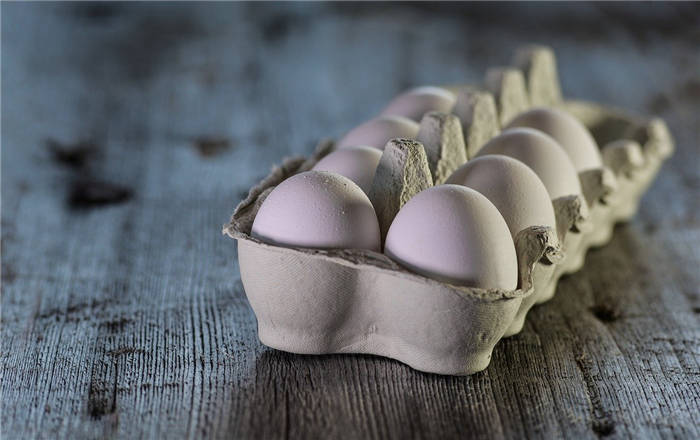
- 🐾How to convert a cat to natural food
- When you shouldn't change your cat's food
- What not to feed cats
- Veterinarian Tips
- Table: What's good and what's bad for your cat
- Ways to switch to natural food
- The power method
- The method of coaxing
- Shortening method
- Mixing method
- How to prepare natural food for a cat for a month
- When it makes sense to switch your pet to natural food
- How to transfer a cat or cat to "natural food"
- The importance of a smooth transition
- The method of accustoming
- Substitution method
- Wet food as an alternative and help in the transition
- Calculating the daily portion of natural food
- Important rules
- Prepare the pet
- Introduce a new food
- How to prepare the food
- How can you help your pet if he doesn't want to try new foods?
- Sample recipes
- Conclusion
- What will happen to a cat after switching to raw meat?
- 🐱How to convert a cat from food to natural food
🐾How to convert a cat to natural food
More and more cat owners are converting their pets to natural food. This is mainly due to the rise in price of holistic and super-premium food or their withdrawal from the market.
Many of those who fed their cats with economy class food, being unaware of the extreme harmfulness of such food, faced with the consequences of such diets, and having paid a handsome sum to save their cats, also decided to transfer their cats to "natural food".
When you shouldn't change your cat's food
A change of diet is a great stress to the cat's body. The new diet requires the entire digestive system to be rearranged for a different consistency and composition of food. In addition, purr-fur often starves, protesting against unfamiliar food, especially if it is transferred from the food economy, which is stuffed with flavorings that disguise it unclear what meat, forcing the animal to believe that he is eating almost the food of the gods. Well, agree, what "rabbit and lamb stew with vegetables" for 18 p.?
But there are categories of cats that you don't want to change your cat's food temporarily:
What not to feed cats
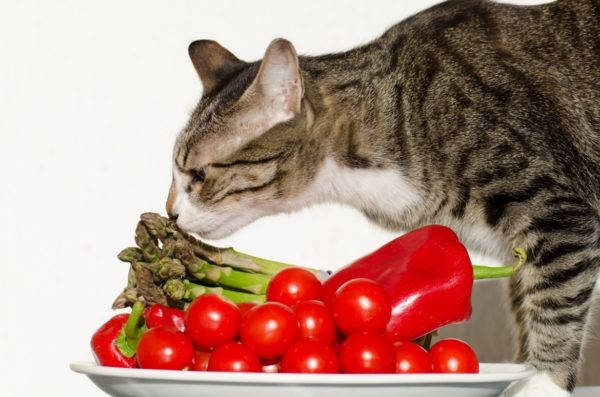
Cats eat food from the human table with enviable pleasure, and many owners watch with tenderness when their cat eats a piece of candy or a piece of chocolate, licks ice cream or eats a slice of melon, peach, tomato, sausage or cheese.
Of course, one time consumption of small amounts of exotic cat food is unlikely to cause a serious illness, but you should not give such products to your cat all the time: it may cause a chronic illness and significantly reduce the cat's life span.
- Fresh milk – This leads to an imbalance in intestinal peristalsis and stomach upsets.
- Food from the table – Salt and condiments in human food can even cause poisoning. And sausage, for example, contains soy products and lots of fats, which are bad for the cat's health.
- Sweets – Carbohydrates are harmful to cats, since sugar is not metabolized by the digestive system at all.
- Coffee and alcohol – poison for animals.
- Raw, unprocessed meat and freshwater fish – Meat should preferably be given boiled or at least put under boiling water, because there is a great possibility of helminth infestation. River fish may be present in the cat's diet only in boiled form, with selected bones.
- Pork – contains too much fat, which the animal's stomach may not be able to handle.
- Tubular or sharp bones – Damage to the esophagus or stomach will definitely lead to death of the pet.
Consumption of such foods by the animal will inevitably lead to illness and poor health.
Veterinarian Tips
There are several pieces of advice from experienced veterinarians for cat owners who want to feed their pets natural food:
Table: What's good and what's bad for your cat
| Useful | Harmful |
| Meat, except pork | Bread and flour products |
| By-products | Pulses and soybeans |
| Vegetable crops with low starch content | Potatoes and corn |
| Seafood | Sweets |
| Cereals: Rice and Buckwheat | Hollowed chicken bones |
| Dairy products | Fruit |
| Greens | Fresh Milk |
It is enough for an adult animal to divide its daily ration in two, especially if it lives in a small apartment and has no opportunity to walk.
- Breakfast – chopped beef mixed with grated vegetables, dinner – cottage cheese mixed with half an egg.
- Breakfast – boiled chicken with rice, dinner – a piece of liver or heart.
- Breakfast – cottage cheese with low calorie sour cream, dinner – chicken necks.
- Breakfast – boneless boiled fish, dinner – grated vegetables and beef.
- Breakfast – chicken with buckwheat and chopped greens, dinner – kefir and egg.
- Breakfast – offal and boiled rice, dinner – chicken necks.
- Breakfast – ryazhenka and buckwheat, dinner – defrosted sea fish.
By alternating products, you can feed your pet tasty and inexpensive, keeping the balance of nutrients it needs.
Ways to switch to natural food
When for various reasons the owner decides to wean the cat from harmful dry food, he needs to have patience. Some animals resist briefly, others persist for a long time, driving their owners to despair.
But the natural instinct for survival is bound to kick in – the cat will eat. No animal voluntarily starves to death when there is a bowl of food nearby.
There are different ways to switch to a different diet. But in all cases it is based on natural meat.
The power method
Don't give in to pity and stop giving dry food completely. Offer easy-to-digest foods, by cutting into pieces.
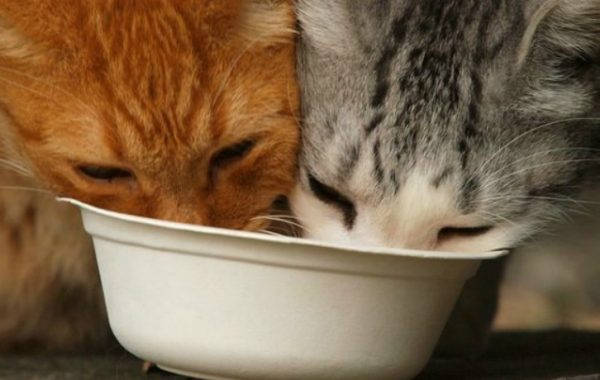
Give food strictly on time, after a quarter of an hour remove the bowl in any case, so that the food does not sour. The animal will eventually realize that no other food will be available. Clean water should always be available.
Abrupt transition to natural food more often leads to starvation and digestive problems. If the cat does not eat for a long time, it is better to try another method.
The method of coaxing
If the cat has other treats besides dry food, you need to increase their amount, reducing the portions of dry food. In this way you can wean the animal from the artificial food, but at the same time accustom him to other low-value food.
Shortening method
You can try gradually reducing the portion of artificial food. Without nourishing the cat with artificial food, he'll eat his fill of nature's food from another bowl. He will gradually get used to the new food after a week or two.
Read more ► Development of kittens by weeks and months: how they grow, look, up to what age is considered a kitten
Mixing method
This method is long, but the gentlest and most effective. You have to gradually reduce the share of artificial food day by day, adding natural food.
How to prepare natural food for a cat for a month
Soups, broths, milk – this is not food for carnivores, who are used to gnaw and chew. Village cats eat small rodents, birds, fish, insects, and sometimes fresh grass.
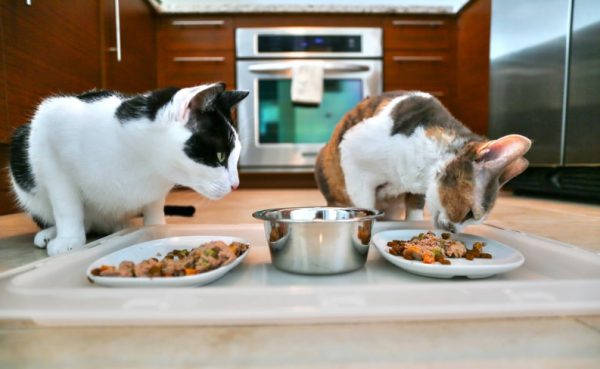
This diet replenishes the cat's body with essential nutrients.
- Protein (50%). These are raw lean meat and fish, cottage cheese, dairy products, as well as liver, stomachs, and heart. Meat and fish products should be frozen so that the animal does not become infected with parasites.
- Fats (35%). Found in meat, and sources of vegetable fats can be wheat, corn.
- Carbohydrates (10%). Kashi, vegetables, fruits.
- Nutritional supplements (5%). Bone meal, oils, vitamins. Sources of vitamins will be fresh fruits, legumes, and green grass. Vitamin complexes are available at veterinary pharmacies, but strictly as prescribed by a specialist. Adding bifidobacteria will help to restructure the digestion.
Food in the form of minced meat is not suitable for cats – they swallow meat in chunks according to their size. It does no harm to the animals – that's their physiology.
You can add some chopped salad greens, broccoli, pumpkin, beets, zucchini, carrots to finely chopped meat. Eggplant and tomatoes in any form are taboo for the cat. These vegetables can lead to food poisoning.
Read more ► Dry cat food allowance per day, wet cat food allowance: how to calculate, what affects how to measure a portion
When it makes sense to switch your pet to natural food
The most compelling and valid reason for switching to a new type of food for any animal is food intolerance. If "dry" causes your pet frequent gastrointestinal problems, profuse hair loss and itching, then it should be replaced with "natural food".
It is recommended to resort to the transfer and if you are not ready to afford your pet food better than the economy. Basic natural products are much cheaper than high-quality "drying", but the problem is that you have to give some extra money to buy good vitamins.
How to transfer a cat or cat to "natural food"
If you have definitely decided to give up "drying", then be sure to familiarize yourself with how to transfer the cat to natural food. It should be done smoothly and gradually to avoid negative consequences.
The importance of a smooth transition
Veterinarians strongly recommend sticking to a smooth transition. The whole point is that a sudden change in food leads to a lot of stress, as well as various digestive disorders.
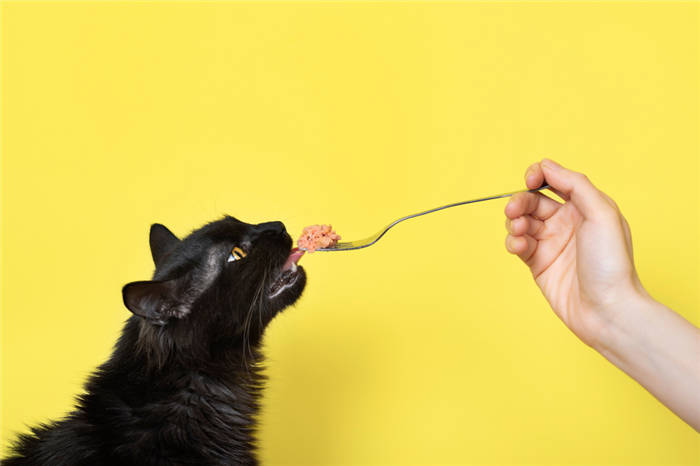
The method of accustoming
Constructed on a smooth replacement of the usual food for a new one. In this case, the scheme of domestication looks as follows:
After 2 weeks, the pet is fed only "straight food". During domestication, regular food is mixed with dry pellets or served in a separate bowl. The first option makes it easier to get used to the new smell and taste, and the second option forces you to try new foods because of the gradual reduction of familiar foods.
Substitution method
A rather radical method that involves a quick one-day replacement. Suitable for animals without chronic diseases, as well as those who are already familiar with the taste of "straight food". The main disadvantages are forced starvation of the animal, as well as various gastrointestinal disorders.
Wet food as an alternative and help in the transition
The third method of domestication looks like "dry – wet food – straight food. It is the easiest and most gentle for the digestive system. In this case you will need twice as much time (14 days for the first stage and the same for the second), but the animal will be much easier to get used to the new taste and soft consistency.
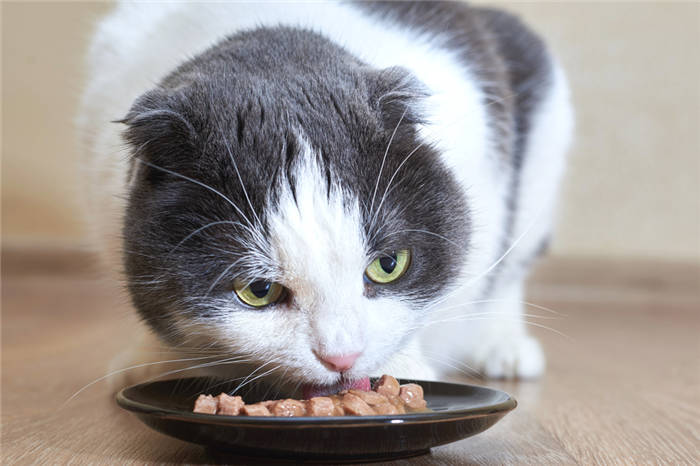
Calculating the daily portion of natural food
On average, the daily portion for an adult cat is 5% of body weight. For simplicity, you can limit yourself to this figure, but it is more reliable to consider your pet's characteristics and calculate the total calories rather than the number of grams.
You can read about the values in the table below.
If your kitty is carrying kittens and weighs 4.5 pounds, she will need 328-410 kcal per day. To get the size of one serving, the specified number of calories should be divided by 2, since adults eat twice a day.
Important rules
Feeding your cat natural foods should be safe. Be careful when buying meat to exclude the presence of hormones and parasites in it.
Keep feeding regular. This will help to wean off begging and eliminate prolonged feelings of hunger. Kittens up to 3 months old should be fed at least 6 times a day, gradually reducing the frequency to 2 times a day by 1 year of age.
Serve food in the same place and be sure to use different bowls when there are multiple pets. This will eliminate fights followed by overeating in the strongest pet. Remember that food should be at room temperature and leftovers should be thrown out or put in the refrigerator for several hours.
Prepare the pet
Before you switch cats to natural food, they need to be prepared. First, you need to get the cat used to eating on a schedule. Before offering a natural product, you need to make sure it is hungry.
First step: feed the pet on a schedule and in portions. Many owners leave dry food freely available: it is always in the bowl, the pet can come for a snack at any time. Natural food can not be left in the bowl for the whole day, because it consists of raw meat. The pet should eat the entire portion at once. Don't worry about your pet going hungry on the new food. Dry food does not give the same feeling of satiety as meat food. This is why cats eat often. On a healthy diet, cats will actually get full in one meal.
A pet should be fed twice a day at 8-12 hour intervals. It is ideal if you feed your cat at the same time. Animals have a responsive internal clock and get used to the schedule fairly quickly. Accustom your pet to this regimen for 5-7 days. During this time, exclude treats from the diet. Fresh water should always be available.
The second step: the food pause. Before introducing a new food, do not feed your pet for 24 hours. Such a pause.
If your pet has been on industrial food for most of his life, his stomach acidity is low. It is normal for cats to have a very acidic stomach environment. It is the high acidity that helps digest raw meat and bones and fight off disease-causing microbes. A food break will not restore the acidity completely, but it will start the process. The cat's transition to natural food from food will be easier.
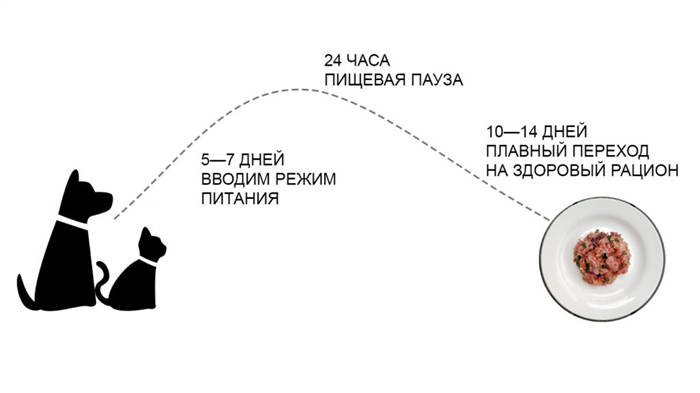
Introduce a new food
Transitioning a cat from food to a natural diet should be gradual. Kittens are easier to transition to natural food than adult animals. But since kittens' bodies are still forming, it's best to introduce food from one type of meat first. This way you will make sure that the pet has no allergies. And if it appears, you will immediately know what kind of meat the body reacted to. Gradually you can give food from other types of meat.
How do I switch to a natural cat food? It will take 10-14 days to make the transition. The idea is to gradually reduce the proportion of regular food and increase the proportion of natural food.
- For the first three to four days, the portion should consist of 75% regular food and 25% natural food.
- For the next three to four days, the proportions of both foods should be equal.
- Then for another three to four days, the portion should consist of 25% regular feed and 75% natural food.
- After that, you can eliminate the regular feed.
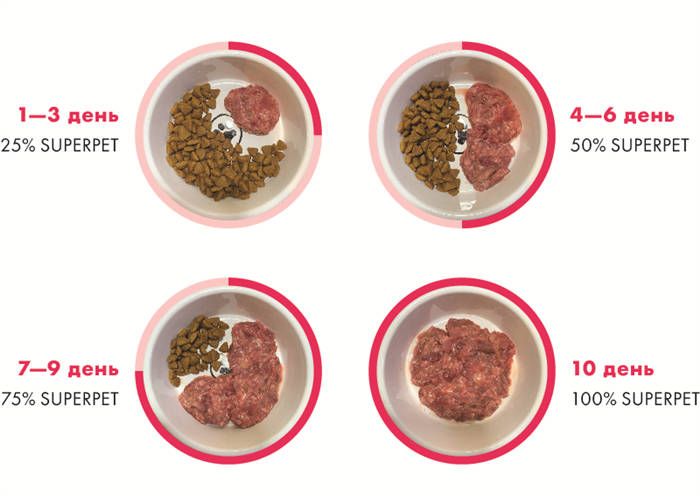
How to prepare the food
The food should be warm, just like the prey that cats eat in the wild. Usually natural food is stored frozen. Thaw it in cold water before feeding. This will take about 15 minutes. After that, reheat the food in warm water. Remember: the food cannot be boiled or heated in the microwave! The food must remain raw. Cooked food loses nutrients and is not good for animals.
Good natural foods, including SUPERPET, contain small particles of raw bones. Don't worry: they are safe for pets. Bones are a source of calcium and phosphorus. They also help to remove plaque from pets' teeth. If you see a raw bone in his food, don't remove it.
How can you help your pet if he doesn't want to try new foods?
If your pet refuses to try natural food, try to figure out why this is happening.
Sample recipes
The basic rule is no flavorings, including spices, salt and sugar. It is a purely human habit and is not necessary for a carnivore. In fact, cooking for pets is not difficult at all, they do not need author's cuisine, it is enough to observe the principle of compatibility of products. For example:
- 69% duck (whole carcass), 25% turkey heart and stomach, 5% turkey liver, 1% vegetables, quail eggs, salmon oil, taurine, vitamin E.
- 95% pink salmon fillets, liver, caviar and bones, 5% spinach, broccoli, carrots, pumpkin.
- 94% chicken, 5% chicken liver, 1% vegetables, eggs, salmon oil, taurine, vitamin E.
By the way, these are the recipes we use to make SUPERPET natural food – try it at a 30% discount.
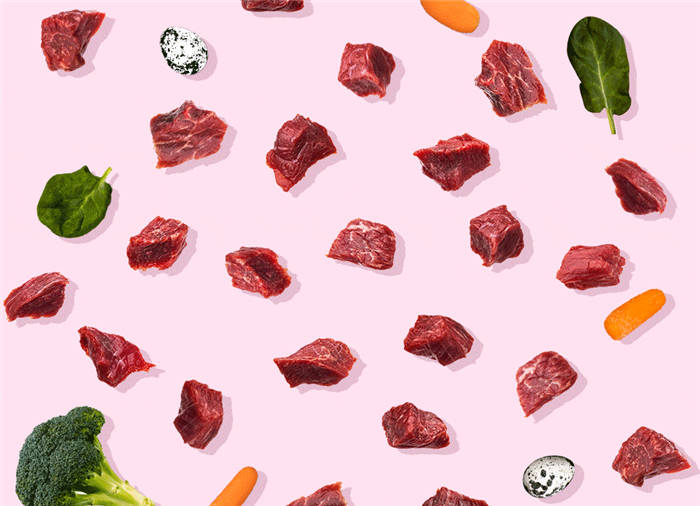
Conclusion
For a gentle transition to a new diet, SUPERPET offers instructions and tip-tips:
- Establish a food pause for 24 hours. In other words, do not feed anything, only water and no dry food. Yes, it's not easy, but it is:
- will sharpen your natural instincts;
- will increase the acidity of the stomach to digest meat;
- awaken the appetite.
- Introduce the new food gradually, increasing the proportion of natural food and decreasing the amount of industrial food. Opened bag should be used within 12 hours, keep the rest in the refrigerator.
To understand the importance of feeding natural food, quality food and proper nutrition for cats, cats and kittens, with a menu for a week should not be in a hurry. It is enough to observe the pet when he is transferred from industrial species to natural food. Very soon you will see a difference in behavior and activity level, which in practice will prove the benefits of a diet close to natural.
Only for the readers of our blog we are glad to offer a 30% discount on the starter kit, so take advantage of our special offer!
What will happen to a cat after switching to raw meat?
After transferring the cat to a species-specific diet, you will notice several interesting changes.
- The volume of feces will decrease. This is due to the fact that the correct diet has much less fiber – ballast, which is not digested and comes out with the feces. Meat is digested almost completely.
- Stools will become less frequent: from once a day to once in 3 days (this is the norm, but it may vary). The stools will become darker in color, well formed, drier, without stench.
- The cat will start to pee more, which is an excellent prevention of urolithiasis. He will also start to drink less, because there is no water in dry food and 50-60% of the meat is water. Mammals in the course of evolution have learned to drink from food, i.e. to extract water from it. Thus, a cat on raw meat is in many ways already satisfying its need for fluids.
- The cat will become more trim and muscular because. on a meat diet the fat is excellent, but the muscles become stronger and the ligaments become more elastic.
- If the cat was skinny, he will become more dense, because natural food (in the absence of internal organ pathologies that interfere with absorption of substances) is perfectly digested and gives the body complete building material for muscles and bones.
- The cat will have more energy from meat products. As a result, it will become more playful and agile. And physical activity for cats, as well as for humans, is an excellent prevention of many diseases and a guarantee of longevity.
- A cat will become a carnivore which will eat meat with great pleasure and sometimes will even act out hunting scenes for tidbits.
- The muscles of the jaw will become strong because of the need to make more intensive movements.
- The teeth will be cleaned of plaque and become white due to the bone content of the food. But if you already have stones, they need to be removed by your dentist: bones alone won't help.
- The coat will become silky and shiny, there will be less hair loss, and dandruff will eventually disappear if an unbalanced diet was the cause.
- Active work of the jaw while eating meat helps to reduce stress levels and increase mental activity, not only in humans but also in animals. So in the process of eating, your cat will relieve stress and become more intelligent.
- If your cat was not in good health because of dry food consumption, but the abnormalities were reversible (like blood in the feces, chronic inflammation of the intestinal walls, etc.), you will see the problem go away.
🐱How to convert a cat from food to natural food
For a variety of reasons, the owner decides to change the cat's diet from prepared food to natural food. Perhaps feeding cheap economy food has caused health problems for the cat, and expensive food scares the wallet.
Natural foods are considered natural foods that the cat eats in its usual environment.
It will take about a month to wean the cat from drying. Sometimes, when the cat's health deteriorates, owners have to give up the idea.
Remove dry food from the diet. Offer light products for the digestive tract: by-products, veal, cut into small pieces. You can put 3-4 crumbs of dry food on top of the meat for flavor.
Feed the pet on time. After half an hour, remove the bowl, so that the food does not spoil. Water should always be available.
If the cat eats treats in patches in addition to the dry food, then increase their amount, while reducing the dry food. Of course, economy class patches are not useful, as well as inexpensive dry food, then it will be easier to transfer from wet food to natural food.
Gradually reduce the portion of cooked food. Not satiated with cookies, the cat will eat natural food from another bowl. After a couple of weeks the cat will eat meat.
The longest method, but gentle. Gradually we remove the dried food, adding canned food, to which, in turn, we add meat and vegetables. Then we reduce the canned food and add natural food. After a month, your pet won't notice he's eating straight.
The smooth transition will not harm the cat's digestion. Adding catnip to natural food at the initial stage of domestication, will speed up the process.
Important: When transferring to another food, it is necessary to give the cat vitamins to support the cat's body.
Protein should make up 60% of the daily ration. They are found in raw meat, fish, cottage cheese, yogurt, by-products.
Meat should be frozen for at least three days, and fish should be boiled to avoid worm infestation.
The main thing is not to show your cat your impatience and dissatisfaction. Stress and bad moods of the pet are bad helpers.






